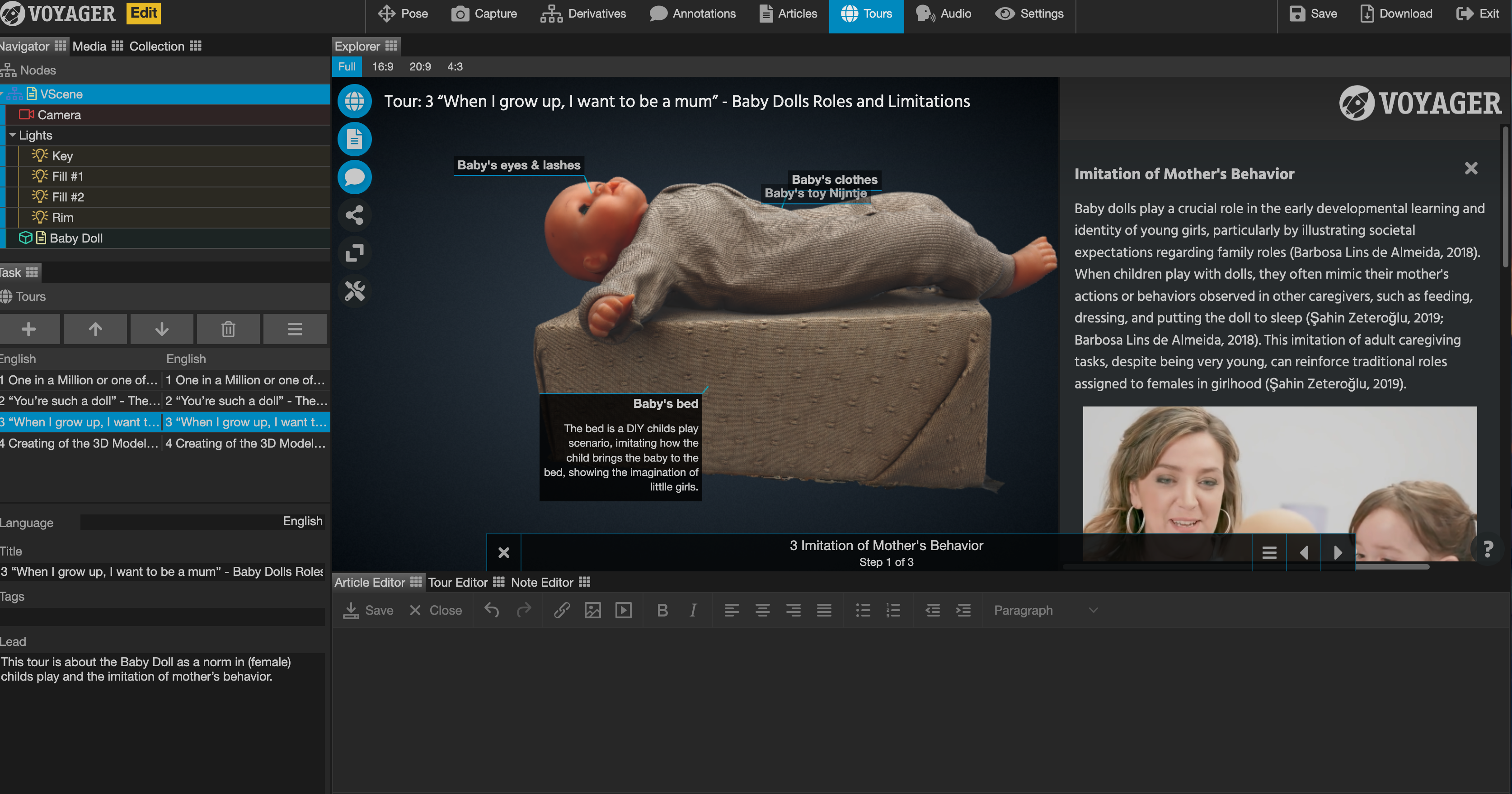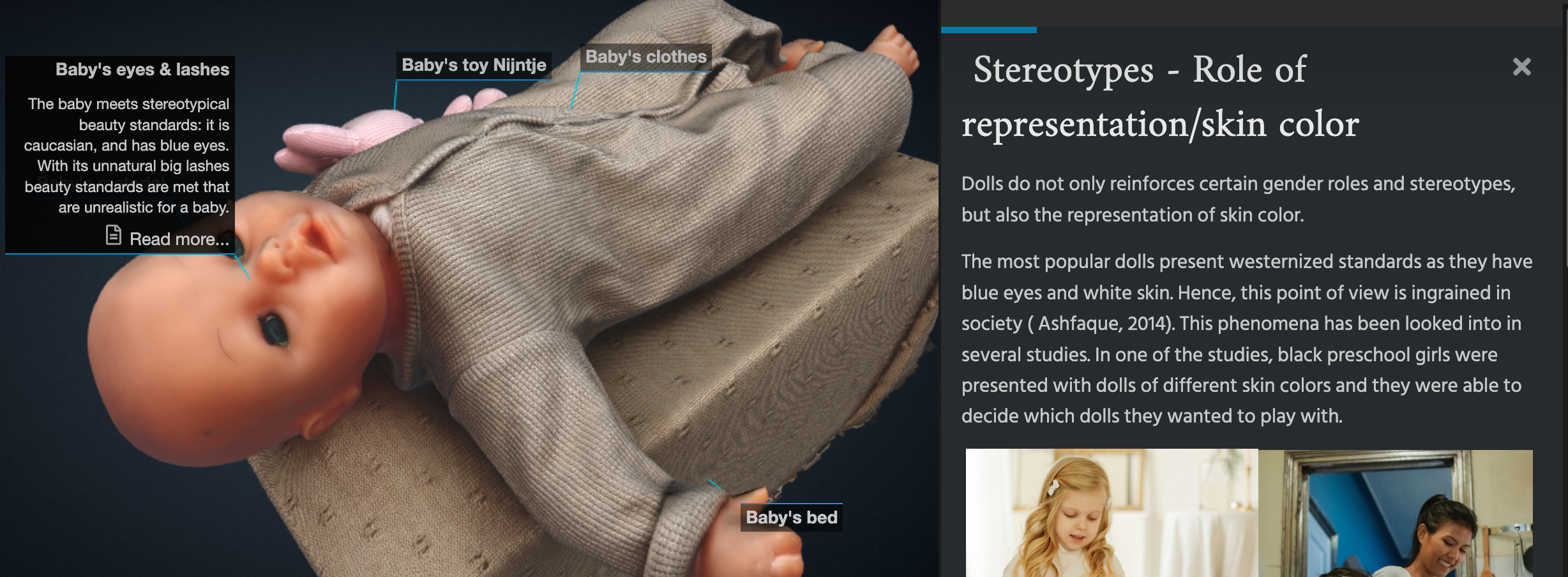
The final 3D model was set to be integrated into Voyager for the scholarly edition's development. This project needed deeper theoretical exploration as we examined the Baby Doll's historical, social, and cultural context within the tour. Surprisingly, our research revealed the doll's significant impact on various societal aspects, such as girlhood, gender stereotypes, and elderly care. Discovering the broad societal influence and the many roles the Baby Doll plays, going beyond the scope of our edition, was not expected by us. These chosen themes were for us most important for inclusion, and were confirmed through the guidance and feedback from our tutors throughout the research.

Adapting to Voyager initially was challenging due to its unfamiliarity. However, the software was actually very user-friendly and made tasks like linking articles, annotating, and coordinating the 3D model's movements throughout the tour quite straightforward. We encountered issues when some articles became inaccessible after being accidentally moved to a different folder outside of "VScene." This problem was easily fixed by copy pasting the content into a new article. Voyager showed to be well-structured, providing a clear view of all materials—including articles, photos, and audios—ready for inclusion in a tour. It allowed for creative freedom in using multimedia elements, such as audio introductions, enhancing the tour's interactivity. The software supports attention to detail with article leads, informative annotations, or carefully chosen camera angles that support the user navigation throughout the tour. Transitioning from theoretical research to article creation in Voyager was a refreshing change, allowing us to use our creativity, through various media, and the creation of a more engaging experience for viewers.
